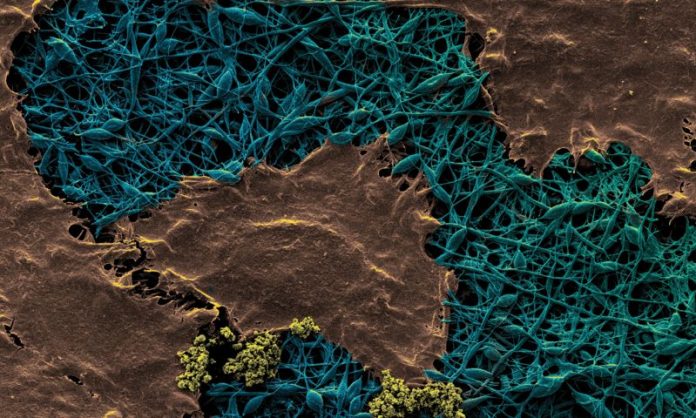
Researchers from RMIT University have developed an innovative wound dressing that can detect infection and improve healing in burns, skin grafts and chronic wounds.
Made of silk and nanodiamond, this smart wound dressing is capable of effectively sensing wound temperature – an early sign of infection – as well as healing and reducing infection from certain bacteria.
Senior researcher Professor Brant Gibson said this next-gent wound dressing offered ‘a solution to the global challenge of wound care and healing’.
“Traditional wound management presents a significant challenge for clinicians, who have to regularly check for infection by looking for signs of redness, heat and swelling,” he said.
“However, once these visual signs appear, inflammation and infection are far advanced, making therapies or interventions substantially more challenging.
“This new technology would aid clinicians to detect infections earlier and non-invasively without the painful procedure of dressing removal.”
Co-researcher and wound specialist at the South Australian Health and Medical Research Institute (SAHMRI), Dr Christina Bursill, described the smart wound dressing as ‘a potential game changer’.
“As a non-invasive measurement of wound temperature, this new technology provides a highly accurate way to monitor wound quality, compared to the very subjective method of visual assessment,” she said.
Dr Asma Khalid, Vice-Chancellor Fellow at RMIT and lead researcher on the project, said the team turned to diamonds to incorporate the heat sensing capability, as diamonds are known to detect biological temperature to a highly precise level.
“By embedding nanodiamonds into silk fibres using an electrospinning process, we’ve been able to develop a naturally derived wound dressing that can sense infections,” Dr Khalid explained.
“The heat sensing capability opens the possibility of contactless wound monitoring by clinicians who would be able to obtain information on the wound’s status from the nanodiamond temperature readout.”
The hybrid technology was also tested for resistance to gram-negative and gram-positive bacteria, the major players in skin wound infections.
“These leading causes of wound or surgical infections in healthcare settings are increasingly resistant to most available antibiotics,” Dr Khalid noted.
“We were very excited to find the nanodiamond silk membranes showed an extremely high antibacterial resistance to gram negative bacteria,” she said.
The study, which also included scientists from the Universities of Adelaide and Melbourne, Flinders University and SAHMRI, was supported by RMIT University’s Vice Chancellor Fellowship and the ARC through the CNPB and a Linkage Infrastructure, Equipment and Facilities (LIEF) grant.




















